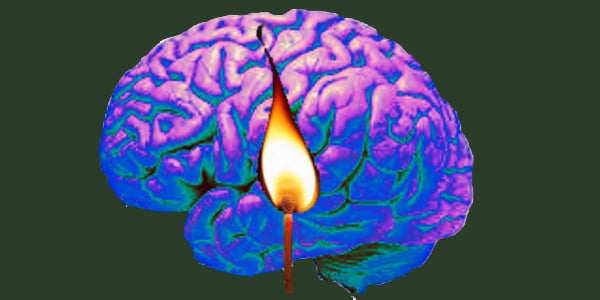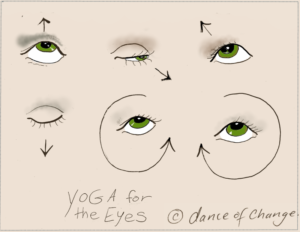
Often people come to my office asking me to help them “stop their anxiety”. They say that no matter what they DO, the anxiety keeps getting the best of them. That is certainly understandable. Anxiety that’s out of control can wreak havoc on our health and our sanity. But here’s the painful truth: you can’t stop fear or anxiety from happening, our brains and bodies are wired for it. What you can do is shift your relationship to it.
Shifting the dance:
Anxiety does not have to run your life. And you don’t have to work so hard to try and stop it. You can actually thrive and shift the grip hold that anxiety has on your life. This is what I call dancing with anxiety. Like learning a new dance, there are steps that you’ll need to learn. There is some practice involved. But mostly all that’s required is a little patience and a desire to do it differently. Let’s look at what this means.
Dancing with anxiety means…..
- Befriending yourself and your body even when stress is high
- Learning to shift your attention in ways that actually help you calm down vs just “manage” your symptoms.
- Gently confronting anxiety, without making it worse or spiraling out of control
- Shifting your perspective of your own anxiety to see it as the super power it really is.
- Enjoying a life with less anxiety. Also, feeling confident that when anxiety does hit, you can handle it.
How anxiety works
Before we start doing that steps and start dancing with anxiety, first we have to understand the mechanism of fear. Let’s figure out why you are using anxiety in the first place.
Just like you can’t prevent a car crash from happening after it’s already occurred, you can’t prevent an anxiety attack after the fact. The good news is that anxiety is actually very predictable cycle. Anything you can predict you can actually change to some degree.
If anxiety is the match that eventually leads to a forest fire, we must first understand how that match gets lit.
 Your brain on fear: Signs you are being hijacked by anxiety:
Your brain on fear: Signs you are being hijacked by anxiety:
- Narrow, tunneled vision
- Mind in a frenzy: Rapid, negative, future-focused thinking “What if…”
- Self-perception also becomes narrow and also negative focused.
- Judgement and complaining about self and others increase “somethings wrong with me” or “something’s wrong with them”
- Obsessive thinking about how it “should be” how we or another person should be behaving, performing, thinking.
- Mental Repetition: Replaying the same dreadful scenario over and over again in our mind.
- Over focus on “Doing” vs “Being”
- Perception shifts from Perception of a self whose on her way somewhere, get to something
- William James “ we leave in a perceptual frenzy, always thinking we should be doing something
The two kinds of Anxiety:
Though anxiety comes in many flavors and variations, it can be boiled down into two main categories: specific anxiety and general anxiety. Specific anxiety I just as it sounds, the anxiety is usually focused on a specific target or triggered by a known set of circumstances. Specific anxiety can include Obsessive Compulsive Disorder (OCD), Specific phobias like agoraphobia and many others. General Anxiety does not have a specific known target or trigger and appears to be pervasive and chronic. Some people also refer to this as Existential Anxiety. Some anxiety has its origins in deep trauma. Existential Anxiety does not. Existential Anxiety looks and feels like habitual stress.
Regardless of the type of anxiety you are suffering from there is a way to shift the dance.
When we begin to feel at home in our bodies and our minds, we can begin to interrupt that anxious part of us that wants to sound the alarm.
A New Approach to Dancing with Anxiety
There are some predictable steps we can take that will help shift the dance.
1. Start with the body.
Anxiety is primarily a lived and felt experience. That means your body is giving you important signals for you’re to pay attention. No matter what you are doing, start by taking a pause. Listen and feel what your body is trying to communicate to you. Is it tense or constricted in anyway? Are there places where this is less the case? Just by slowing down to notice our physical state can shift us out of the anxiety a bit. Stop and allow the dust to settle.
2. Create a Circle of Safety:
Often we don’t allow ourselves to enter our own experience because we have been taught it’s not safe. Part of stepping out of the grip of anxiety is letting ourselves know it is safe to feel now. Set an intention to step out of anxiety and befriend yourself. Once you befriend your body you might start noticing and befriending other parts of your experience: your thoughts, your emotions. Try to do this without judgement. If you need help with this you might imagined safe people, places or allies that represent safety and curiosity for you. You can also ask for help from a trusted friend or therapist.
3. Shore up on resources:
Once things feel safe enough on the inside and the outside we can look towards sources of creative and life inspiration to help heal. Anything that inspires us, opens us up and allows us to feel free can be used to transform our experience of anxiety. I call these resources. Often it’s a good idea to have a combination of resources to offset the effects of anxiety. Resources can be positive affirmations, soothing people, exercise, creative practice, spiritual practice, community, as well as a whole host of other things. In my work with people we often identify the specific resources that people are using already and which ones are most effective for them. We may also identify new ones that perhaps have been overlooked.
4. Add a Dab of what Frightens
You may be surprised to discover that things that frighten you and normally cause anxiety can actually strengthen you if used in the right way. Familiar anxiety “triggers” can be transformed into helpful reminders to change course. We can learn to choose a different path than the one our anxiety tends to follow. A racing heart can be transformed into a reassuring beat. A tightened jaw can soften and open.
Do you have anxiety?
Ready to dance with it instead of let it run you?
Contact our office to make an appointment:
Give us a call at: (314) 827-5448 or email us at danielle@danceofchange.com
We offer in person sessions in our office in Saint Louis, MO in Webster Groves as well as video (Telehealth) session for anyone located in the state of Missouri
